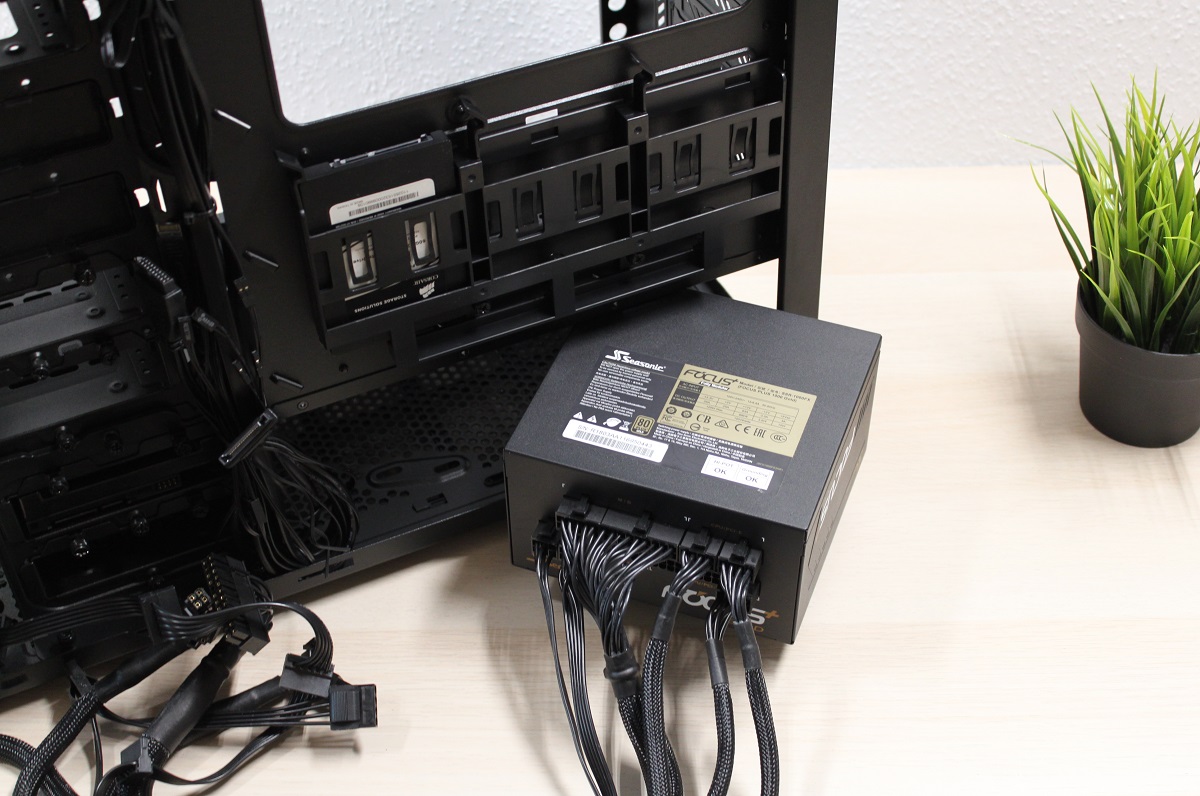

We tested using our new Skylake case test bench, detailed in the table below. This is all necessary because the side panels are both transparent, so messy cables would be fully visible, and because the side panel is just held on with magnets and doesn’t have the force to squash down a wad of wires. We use the bare minimum of cables in our test bench, but if we needed any more they probably just wouldn’t fit. It’s a good idea, but it’s a tight squeeze to fit everything in, and once it’s installed every cable must go through it in order to get to the cutouts. Behind the motherboard tray, the cable management channel has some excellent cable tie points with velcro straps pre-attached, and there’s also a gutter-shaped piece of steel designed to clamp over and contain all of the cables. The steel plate at the front is held in with screws and can be removed, but the rest is permanently riveted in. The PSU half-shroud is completely sealed off from the rest of the case. The filters eject to the side, which is far easier to manage than filters which have to be threaded in from the front. Instead, there are removable fan trays and slide-out magnetic filters on both the top and front of the case. The front panel is fixed in place with five screws and some very stubborn plastic, and it’s clearly not meant to be taken off. It’s no mesh front, but it’s better than some we’ve seen. There are intentional gaps all around the side panels, but especially at the front, where there’s about a centimeter of empty space on either side of the front panel for airflow. On the upcoming “Special Edition,” these panels are also tempered glass, presumably contributing to its much higher cost. These side panels compliment the curved front panel, which is brushed aluminum on the version we’re reviewing. Both panels should be removed before picking the case up or laying it on its side for installation. They closed securely enough with the case stationary, but carrying it around required some extra caution. When they work, they work well, but the manufacturing tolerances are very fine and not all of the magnets in our case made strong contact with the case metal. At the front, there are rubber-wrapped magnets that clamp firmly onto the chassis. The side panels are completely identical and interchangeable, which probably benefits Corsair as much as it does consumers. They’re attached at the back by sturdy hinges, which allow them to be lifted up and off with the removal of a single (optional) screw apiece.

The side panels of the 500D are a clever solution to the difficulty of bending glass: the panes themselves are completely flat, but the metal borders are curved inwards to create the same visual effect as the Cooler Master C700P.


 0 kommentar(er)
0 kommentar(er)
